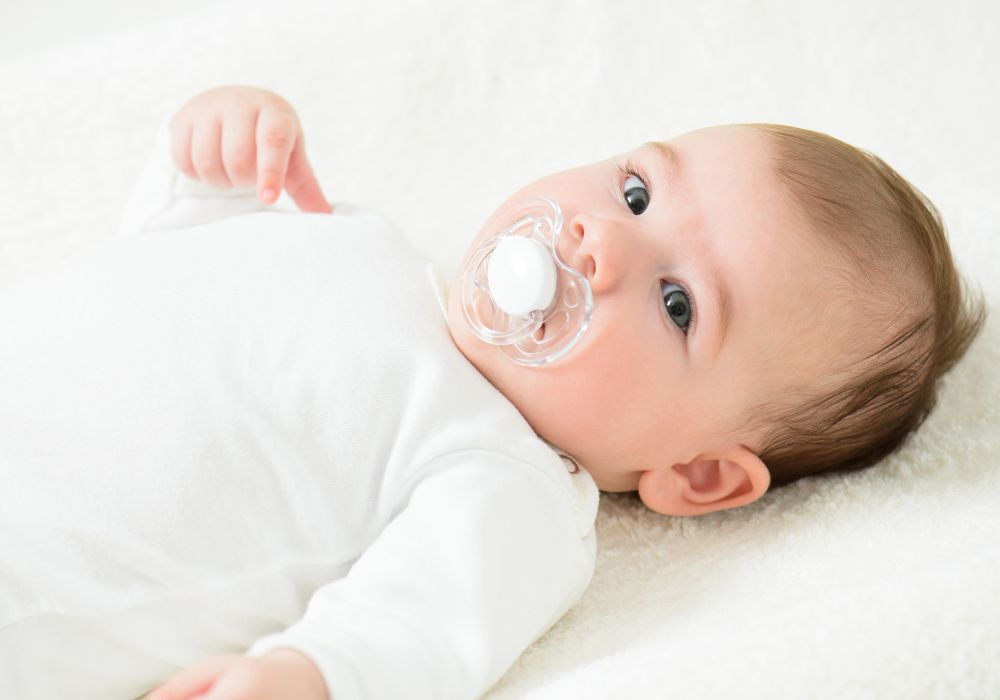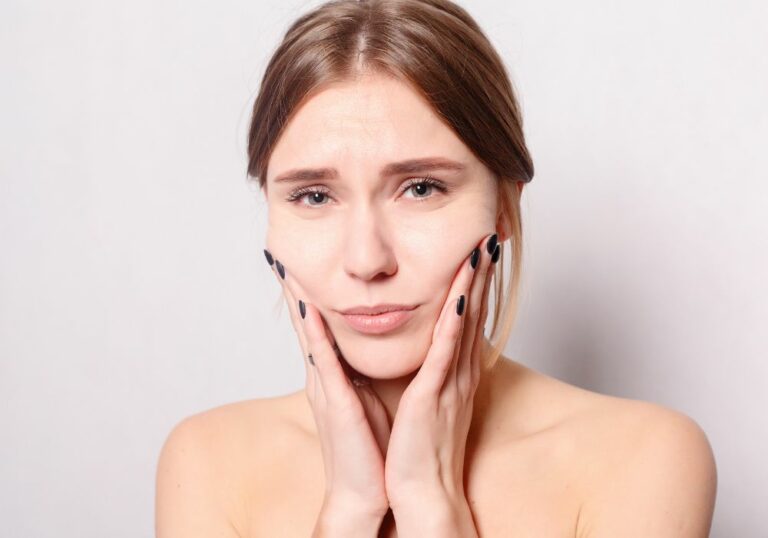The sight of a newborn peacefully sucking on a pacifier is precious to many parents. Yet some worry this common habit could cause their child’s future teeth to grow in crooked. Buck teeth is a dental condition where the two upper front teeth are prominently angled outward. Rumors have spread for years that pacifier use may be to blame. But what does the research actually say?
In this comprehensive article, we will analyze the evidence on pacifier use and dental health. We will cover:
- An overview of buck teeth and malocclusion
- The complex causes of crooked teeth
- Whether pacifiers alone can change alignment
- Proper pacifier use for dental health
- Recommended pacifier weaning age
- Additional factors that impact dental development
Understanding the facts will allow you to make informed choices about your baby’s pacifier use. You can feel confident providing this soothing habit without sacrificing their future smile.
What Are Buck Teeth?
The term “buck teeth” refers to a specific type of dental malocclusion where the two maxillary (upper jaw) central incisors are noticeably angled outward. The central incisors are the middle teeth located centrally in the front of the upper arch. Normally, the upper front teeth should align relatively straight up and down beneath the upper lip.
With buck teeth, the two central incisors protrude and angle outward beyond this normal alignment. They stick out prominently from the other teeth, creating a gap. This can occur to varying degrees, from slightly rotated incisors to severely protruding teeth. The farther they angle outward, the more serious the buck teeth appearance.
Buck teeth only describe the specific upper central incisor protrusion. However, the term is sometimes used interchangeably for other types of dental malocclusions:
- Overjet – Upper front teeth extend too far forward over the lower teeth
- Overbite – Lower front teeth bite too far inward behind the upper teeth
- Open bite – Vertical gap between upper and lower front teeth when biting
- Crossbite – Upper and lower teeth align improperly from left to right
These issues can occur individually or together. “Buck teeth” generally refers to upper central incisors sticking out but may loosely reference other alignment problems.
What Causes Buck Teeth in Children?
Buck teeth, like most dentofacial abnormalities, arise from a combination of genetic and environmental factors. Possible causes include:
Genetic traits
Inherited jaw size, tooth size, arch shape, and facial muscle attachments can all contribute to buck teeth. Orthodontic issues often have familial tendencies.
Thumb sucking
Aggressive, prolonged thumb sucking over months or years can slowly push teeth outward. The consistent pressure deforms the soft jaws.
Tongue thrusting
Placing the tongue incorrectly when swallowing pushes it against the teeth. Over time, this can nudge the front teeth forward.
Mouth breathing
Chronic breathing through the mouth alters growth of the jaws and facial muscles, affecting tooth positioning.
Allergies/enlarged adenoids
These can lead to chronic nasal congestion and mouth breathing.
Defective dental tissue
Weak tooth enamel or abnormal roots may increase risk of tooth movement.
Premature birth
Being born early interrupts late prenatal jaw development, increasing malocclusion risk.
Tobacco smoking
Secondhand smoke exposure is linked to higher orthodontic problems.
As you can see, buck teeth and crooked bites often result from multiple intersecting causes. Let’s analyze where pacifier use fits into the equation.
Do Pacifiers Cause Buck Teeth?

Many parents understandably assume pacifier use can push infants’ teeth outward. After all, babies suck vigorously on pacifiers for comfort. Wouldn’t constant sucking pressure move the delicate emerging teeth? Surprisingly, research to date has not found pacifiers themselves to significantly cause malocclusions or buck teeth:
Landmark 2016 study – This evaluated over 1,000 children from birth until age 5, documenting pacifier habits. At 5 years old, kids who used pacifiers had no increased risk of crooked teeth compared to those who did not use pacifiers.
2013 study – Dental impressions from 399 children ages 3-5 were examined. High pacifier users showed no greater prevalence of malocclusions versus non-pacifier users.
These and other studies indicate pacifiers themselves do not directly cause teeth to grow in crooked or bucked. So why do rumors persist blaming pacifiers? There are two important caveats to unpack here.
Pacifier Misuse
How pacifiers are used matters. While pacifiers themselves appear harmless, improper overuse potentially could impact alignment over time. Prolonged, forceful sucking several hours a day puts excessive pressure on the jaws. This is why dental experts suggest common sense pacifier guidelines, which we’ll cover next.
Mixed Causation
Crooked teeth nearly always have mixed causes, with inherited and environmental factors intersecting. For example, a toddler may experience chronic allergies and mouth breathing in addition to pacifier use. The combination of these issues – not the pacifier itself – may increase risk of dental malocclusions. Studies try to separate out pacifier effects from other variables.
Therefore, pacifiers alone are unlikely to directly cause buck teeth when used reasonably and weaned by age 2. But excessive, improper use could contribute to issues in a small minority of cases involving multiple risk factors.
Proper Pacifier Use for Healthy Teeth
When used correctly, pacifiers provide comfort without long-term dental risks:
- Occasional use – Pacifiers should complement and not replace natural soothing behaviors like sucking thumbs. Limit use to mainly nap/bedtimes.
- Gentle sucking – Babies should not aggressively bite, clench, or chew pacifiers forcefully. Light sucking minimizes pressure.
- Daytime weaning – Gradually wean baby off daytime pacifier use between 6-12 months as they develop self-soothing skills.
- No all-night use – Avoid letting babies sleep with pacifiers in their mouths for many hours overnight.
- Choose age-appropriate pacifiers – Ones designed for teething babies are less likely to be bitten.
By following guidelines, parents can allow pacifier enjoyment without overuse that might affect dental growth. Never force pacifiers into a resistant baby’s mouth or use as a constant babysitter.
Weaning Age Recommendations

To prevent any possibility of long-term issues, dental experts advise gradually weaning babies completely between 12-18 months old. The American Academy of Pediatrics and American Academy of Family Physicians offer these pacifier weaning tips: [3]
- Start limiting pacifier to nap/bedtimes only around 6-12 months as baby develops self-soothing skills.
- Begin the weaning process between 15-18 months by providing pacifiers less often and restricting access.
- Aim to stop pacifier use completely by toddler’s second birthday.
The timeline depends somewhat on the child. Monitor their emotional attachment and interest in the pacifier. Delay if needed, but try to wean off by 24-36 months at the latest. Continue offering cuddles and alternative soothing methods. Weaning prevents any small risks of long-term pacifier use.
Additional Factors Impacting Teeth Alignment
Remember, pacifier use is only one piece of the larger dental development process. Many other variables also influence how teeth erupt:
- Genetics – Family history of malocclusions is a top predictor of crooked teeth risk.
- Oral habits – Thumb or finger sucking can also displace teeth depending on duration and intensity.
- Airway issues – Chronic allergies, sinus problems, nasal obstruction, and mouth breathing affect growth.
- Teeth and jaw irregularities – Small jaws, tooth eruption sequence, and other dental anomalies increase risk.
- Medical conditions – Cleft lip/palate, cysts, poor nutrition, illness, and medications.
- Injuries – Injury to the teeth or jaws can shift alignment.
- Early life factors – Low birth weight, preterm birth, and tobacco smoke exposure.
Remember, many kids experience some minor malocclusion early on as their mouths grow rapidly. Mild issues often self-correct with further development. While improper pacifier use may potentially contribute, many other factors influence alignment significantly.
 Conclusion
Conclusion
Current evidence does not indicate pacifiers themselves directly cause buck teeth or lasting orthodontic issues when used responsibly. Limiting frequency and intensity of sucking minimizes pressure on emerging teeth. Weaning between 12-18 months provides comfort without long-term risks.
In the context of multiple genetic and environmental influences, pacifiers are unlikely to be a sole culprit of crooked teeth. Parents can feel reassured that meeting pacifier guidelines gives babies soothing and security without sacrificing their future smiles. After weaning, you can look forward to many years of seeing those beautiful teeth grow in straight and strong.
Expanded Frequently Asked Questions
How might pacifiers move teeth?
Pacifiers themselves do not move teeth, but excessive prolonged sucking potentially could in some cases. The consistent sucking pressure applied directly to the upper front teeth over months or years can slowly shift their alignment. This is why dental organizations suggest limiting pacifier duration and intensity.
Why don’t European babies have more dental issues from pacifiers?
Some European countries like Sweden have lower rates of orthodontic problems, despite often more prevalent pacifier use. However, research has not found a clear cause-effect relationship here. Many interacting genetic and environmental factors shape international dental health trends beyond just pacifier use differences.
If my baby stops using the pacifier on their own, can it still affect teeth?
If your baby self-weans from the pacifier early in the first year or so, dental risks are minimal. Short-term, limited pacifier use, even if intense, is unlikely to affect permanent teeth before roots fully form. The greatest risks come from prolonged, forceful sucking over many months or years.
How do I get my toddler to give up the pacifier by age 2?
Around 18 months, begin limiting access and offering pacifiers less often. Use distraction, praise, sticker charts, and small toys/rewards for achieved milestones. Prepare them through books, role play, and language about being a “big kid.” Consider a celebratory event like giving pacifiers to babies or the “pacifier fairy.”
Will late pacifier use reverse or worsen previous orthodontic treatment?
If a child has already undergone orthodontic treatment like braces, continuing pacifier use (or other oral habits) against recommendation can potentially reverse progress as teeth shift. It’s best to wean pacifier use well before any orthodontic intervention is considered or needed.







